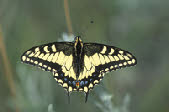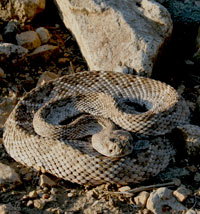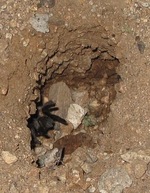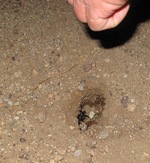 Five billion.
Five billion.
That’s roughly how many birds migrate each spring and fall—just in North America.
The physical feats performed by many of those birds make the accomplishments of Olympic athletes seem laughable by comparison. A Ruby-throated Hummingbird—which weighs five grams fully fattened for the journey, the same as a nickel—flies non-stop across the Gulf of Mexico, 500 miles in 22 hours. At the end of that flight it weighs about the same as a penny, perhaps three grams. For comparison, a 150-pound human marathon runner can lose four pounds during the 26.2-mile race. Imagine a single event that could strip 50 pounds off him.
Other flights are equally astonishing. Arctic Terns make the longest migration known—22,000 miles round trip from the Arctic to the Antarctic. In 2007, using satellite tags, scientists tracked the longest non-stop migration flight ever recorded when a shorebird called a Bar-tailed Godwit flew from Alaska to New Zealand—7,145 miles—without pausing to rest, eat, or drink. About 70,000 godwits make this trek each year.
These are superlatives, but each of those five billion migrating North American birds—along with billions more across the planet—performs its own, well, superhuman feat.
Why do they do it? The answer lies entirely within the phenomenon of seasonal change. Every year, the latitudinal zones of greatest productivity in the Northern and Southern Hemispheres shift north and south by thousands of miles with increasing and decreasing solar exposure. Arctic tundra covered in ice and 24-hour night in January is by July burgeoning with life and sunshine. Even states in the northern U.S. change dramatically month to month. Birds that make the trek from warmer winter climes to these rich summer grounds can vastly enhance their food intake and subsequent reproductive success—the end goal of all living things.
If they survive.
For the downside to migration is that it is immensely hazardous, exposing the bird to starvation, predation, dehydration, hypo- and hyperthermia—a catalog of risk. It’s impossible to guess how many thousands of those Ruby-throated Hummingbirds come up just short of the fearsome amount of energy needed to complete their flight, and fall into the sea. A bird that arrives early at its summering grounds can get a head start on territory and breeding—or it can die during a late freeze. Many predators have evolved to prey specifically on migrating birds during peak movement periods. It’s estimated that over 60 percent of some species’ populations fail to make a complete two-way migration.
Partially because of these risks, only about half the estimated 10,000 bird species on earth are migratory (many tropical species don’t need to migrate, thanks to the stable year-round climate in their habitat). The percentage of migratory species varies country to country depending on climate. For example, fully 90 percent of Canadian birds migrate south to the U.S. or beyond each winter.
The good news for humans is that, twice each year, migration offers a wildlife viewing spectacle beyond compare. Across the U.S. and Europe, known migratory flyways—the routes used by a majority of species due to abundant water and food—attract thousands of people, from avid “twitchers,” as they’re known in Britain, to those with a simple sense of wonder who couldn’t care less if the 200 hawks passing overhead at once at Cape May, New Jersey, are Sharp-shinned or Cooper’s.
But even backyard birdwatching peaks during spring and fall. Check your local Audubon Society website to find out what’s happening when near your home—or along the route of your travels. Here are a couple of links to get started:
Migration hotspots
200 North American birdwatching spots
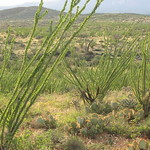 One of the most common misconceptions about the Sonoran Desert held by those who’ve never lived here is that there are no seasons. Isn’t it just hot and dry all year long? Maybe a little less hot in “winter?”
One of the most common misconceptions about the Sonoran Desert held by those who’ve never lived here is that there are no seasons. Isn’t it just hot and dry all year long? Maybe a little less hot in “winter?”
